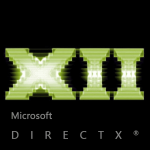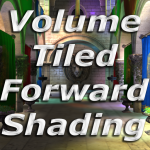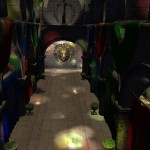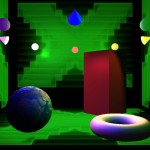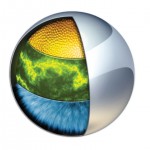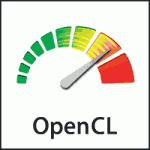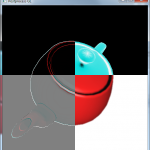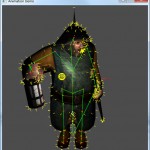This is the second lesson in a series of lessons to teach you how to create a DirectX 12 powered application from scratch. In this lesson, vertex and index data is uploaded to the Graphics Processing Unit (GPU) for rendering. Basic vertex and pixel shaders are described and how to create a Pipeline State Object (PSO) that utilizes those shaders is also described. A root signature defines the parameters that are used by the stages of the rendering pipeline. In this lesson a simple root signature is created that defines a single constant buffer that contains the Model-View-Projection (MVP) matrix that is used to rotate a model in the scene.
Tag Archives: rendering
Learning DirectX 12 – Lesson 1 – Initialize DirectX 12
This is the first lesson in a series of lessons to teach you how to create a DirectX 12 application from scratch. In this lesson, you will learn how to query for DirectX 12 capable display adapters that are available, create a DirectX 12 device, create a swap-chain, and you will also learn how to present the swap chain back buffer to the screen. In this lesson, you will also create a command queue and a command list and learn how to synchronize the CPU and GPU operations in order to correctly implement N-buffered rendering.
Volume Tiled Forward Shading
In this post, Volume Tiled Forward Shading rendering is described. Volume Tiled Forward Shading is based on Tiled and Clustered Forward Shading described by Ola Olsson et. al. [13][20]. Similar to Clustered Shading, Volume Tiled Forward Shading builds a 3D grid of volume tiles (clusters) and assigns the lights in the scene to the volumes tiles. Only the lights that are intersecting with the volume tile for the current pixel need to be considered during shading. By sorting the lights into volume tiles, the performance of the shading stage can be greatly improved. By building a Bounding Volume Hierarchy (BVH) over the lights in the scene, the performance of the light assignment to tiles phase can also be improved. The Volume Tiled Forward Shading technique combined with the BVH optimization allows for millions of light sources to be active in the scene.
Forward vs Deferred vs Forward+ Rendering with DirectX 11
In this article, I will analyze and compare three rendering algorithms:
- Forward Rendering
- Deferred Shading
- Forward+ (Tiled Forward Rendering)
Texturing and Lighting in DirectX 11
Introduction to Shader Programming with Cg 3.1
In this article I will introduce the reader to shader programming using the Cg shader programming language. I will use OpenGL graphics API to communicate with the Cg shaders. This article does not explain how use OpenGL. If you require an introduction to OpenGL, you can follow my previous article titled Introduction to OpenGL.
Using OpenGL Vertex Buffer Objects
If you are not sure how to use extensions in OpenGL, you can refer to my previous article titled OpenGL Extensions. If you have never programmed an OpenGL application before, you can refer to my previous article titled Introduction to OpenGL.
Introduction to OpenCL
In this article I will provide a brief introduction to OpenCL. OpenCL is a open standard for general purpose parallel programming across CPUs, GPUs, and other programmable parallel devices. I assume that the reader is familiar with the C/C++ programming languages. I will use Microsoft Visual Studio 2008 to show how you can setup a project that is compiled with the OpenCL API.
OpenGL Interoperability with CUDA
In this article I will discuss how you can use OpenGL textures and buffers in a CUDA kernel. I will demonstrate a simple post-process effect that can be applied to off-screen textures and then rendered to the screen using a full-screen quad. I will assume the reader has some basic knowledge of C/C++ programming, OpenGL, and CUDA. If you lack OpenGL knowledge, you can refer to my previous article titled Introduction to OpenGL or if you have never done anything with CUDA, you can follow my previous article titled Introduction to CUDA.
GPU Skinning of MD5 Models in OpenGL and Cg
This tutorial builds upon the previous article titled [Loading and Animating MD5 Models with OpenGL]. It is highly recommended that you read the previous article before following this one. In this tutorial, I will extend the MD5 model rendering to provide support for GPU skinning. I will also provide an example shader that will perform the vertex skinning in the vertex shader and do per-fragment lighting on the model using a single point light. For a complete discussion on lighting in CgFX, you can refer to my previous article titled [Transformation and Lighting in Cg].
Continue reading

